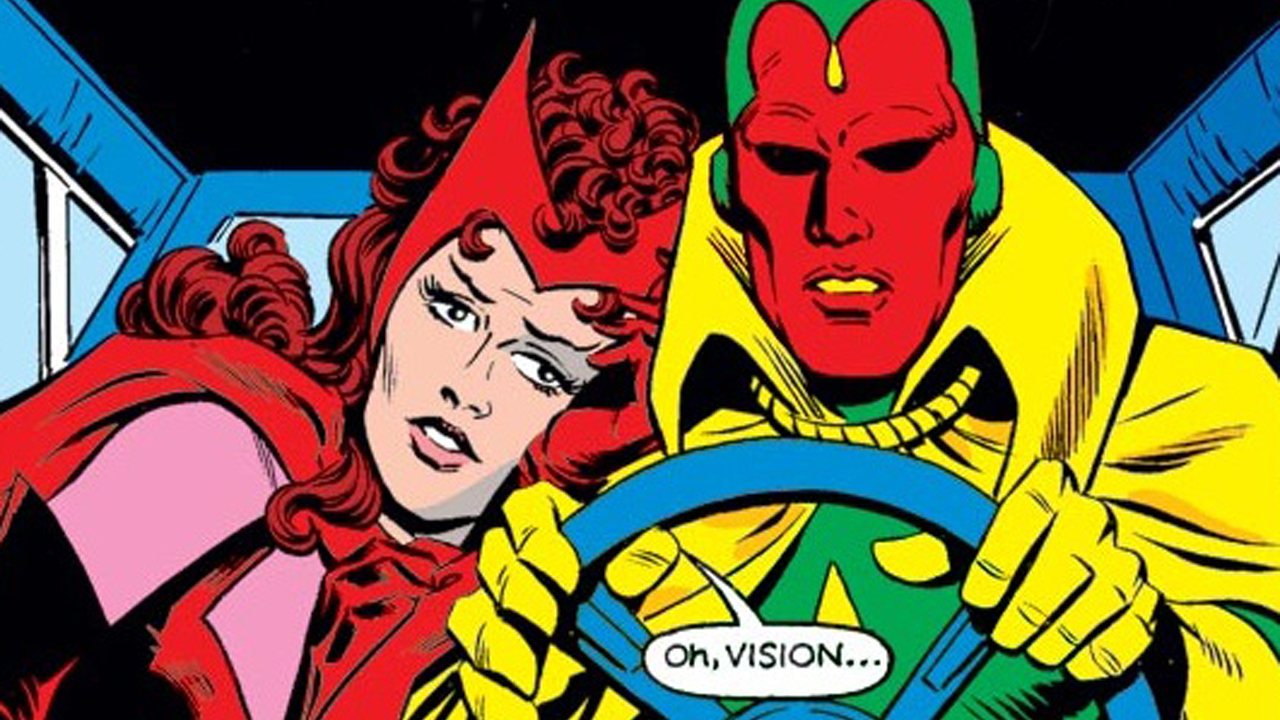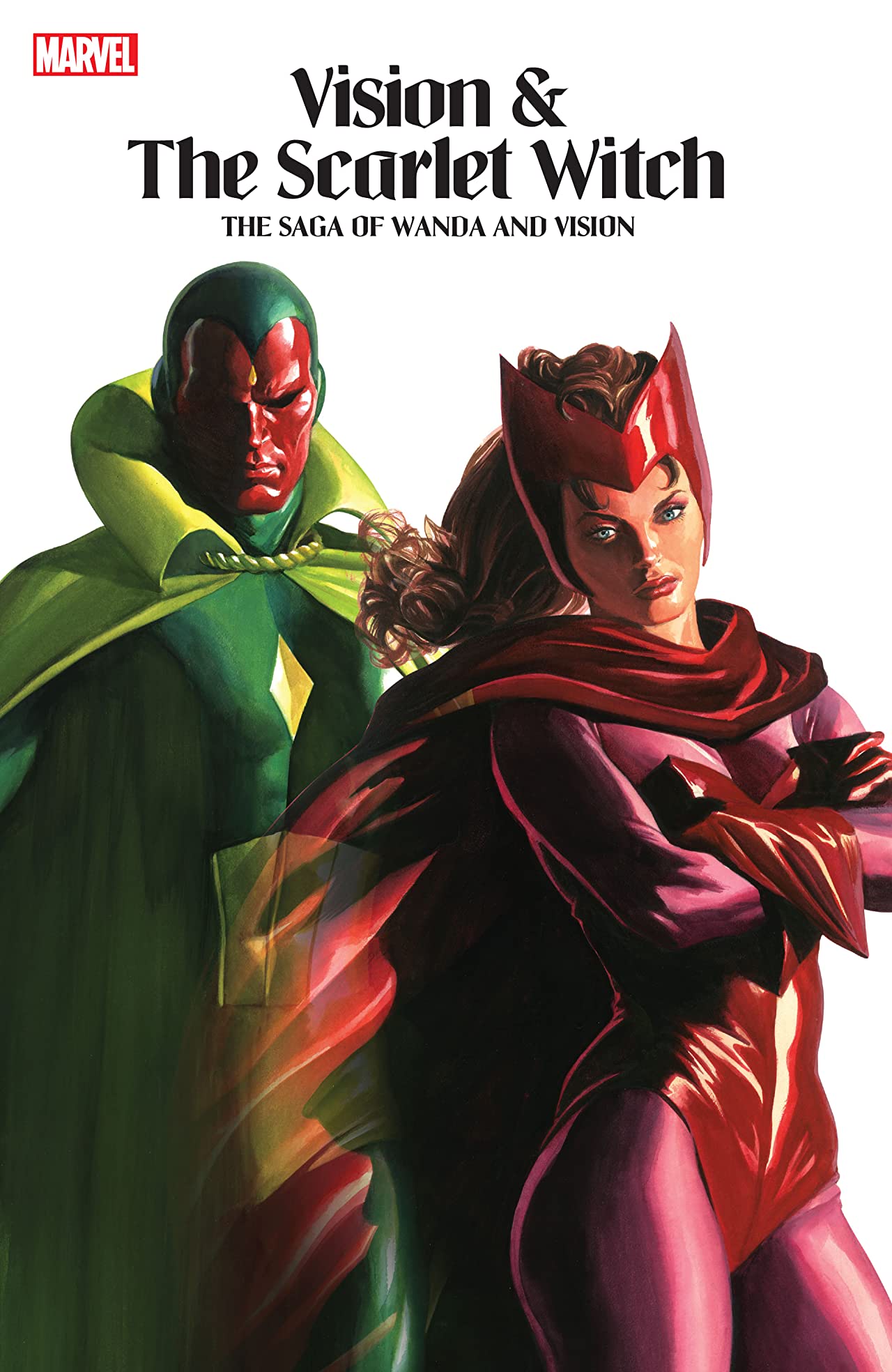The Vision and Scarlet Witch: Extraordinary people and their attempts at ordinary living
Revisiting Wanda and Vision's '80s comics ahead of Disney Plus' WandaVision

Part of the success of the Marvel Cinematic Universe is its core idea of spectacular superheroes doing ordinary things - from eating shwarmas to arguing over who can lift what. And that idea of extraordinary people doing ordinary things - or trying to, at least - is at the heart of Scarlet Witch and the Vision's decades-long relationship, as spotlighted in the upcoming DisneyPlus series WandaVision.

In the film Avengers: Age of Ultron, Hawkeye knows where the team can lie low and recuperate following a failed attempt at stopping the eponymous villain – a farmhouse. His family's farmhouse. An off-the-record location which usually allows them the ability to live a life where the superhero and S.H.I.E.L.D. activities don't intrude. The rest of the team is skeptical upon arrival and later in the sequence, director Joss Whedon homages the final shot of John Ford's The Searchers, with Captain America standing on the porch looking inside, at a domesticity he's unlikely to have.
Throughout the movie, Whedon takes care to observe the ordinary people who live in this world to reinforce the melancholy of the extraordinary ones talking about how one day they won't have to go out and fight to keep it safe, unsure if the day will ever come. His introduction of the Vision and Wanda Maximoff, the Scarlet Witch, provides a glimmer of hope in the sense that others will follow, though their attempts at having a normal relationship in the movies that followed have been no less fraught.
After growing closer in the wake of Pietro Maximoff's death, Captain America: Civil War's Sokovia Accords saw them stand on opposite sides of the conflict. By the time of Avengers: Infinity War, the pair have moved past this and are living off the grid, but Thanos' quest for the Infinity Stones drags them back into the world they'd left behind, culminating in the Vision dying twice. Which makes it quite surprising to see the pair of them living in suburbia in trailers for the upcoming WandaVision, though something is clearly amiss.

Some will point to the recent comic book limited series Vision from Tom King and Gabriel Herandez Walta as an example of one of the pair trying to live a normal life in the comic books, but the two Vision and the Scarlet Witch limited series from the 1980s – which Marvel is re-releasing in one big collection titled The Saga of Wanda and Vision to coincide with the show – are a much more likely inspiration as an even-handed approach in showing the duo attempting to start a life (and a family) in their own home rather than the Avengers Mansion.
Prior to those series however is Giant-Size Avengers #4, the 1975 issue where the two marry. It's important for how it illustrates the central conundrum of their attempts, namely that the joyful occasion isn't the story's sole focus. Steve Englehart's script splits its time between a plot involving the pair and another with the other Avengers, Mantis, Swordsman, and Kang, alternating back and forth before culminating in a double wedding. The nature of their relationship does drive their story though. The issue opens with Vision discovering that Dormammu has taken control of Wanda. Unaware of her actions, she sets out to kill the synthezoid, though his proclamation of love for her is enough to snap her out of this trance.
After defeating the villain, the pair return to the Avengers Mansion, Vision asks her to marry him, now seeing himself as a man, and of course, she says yes. For all the action in the issue, this leaves just three pages to see the two unions happen, and ultimately shows how the extraordinary have to juggle otherwise ordinary life events with the demands of being superheroes. Life is already tough enough to find a balance in, imagine how hard it can be when you also have to consider the potential alien invasions or any number of villains looking to ruin the day.
Get the best comic news, insights, opinions, analysis and more!

It would take another seven years before Bill Mantlo penned their first four-issue The Vision and the Scarlet Witch, the first issue of which cements this fact in brisk fashion. It's Halloween and the couple are moving into a house in Leonia, New Jersey. Before they've even had time to properly unpack, much less settle in, the house is besieged by an ancient spirit and the trick-or-treaters it possesses. This becomes a home invasion story with extra resonance due to how quickly the attempt at ordinary living is pushed to the sidelines in order to make space for expected action, the antagonistic beings brute-forcing their way into this domestic space.
Just as soon as the couple finishes with this, Robert Frank arrives on the doorstep, still under the belief he is Wanda and Pietro's father, asking for help with his other son, Nuklo. Agreeing to do so, they come back to Manhattan which in turn leads to a Williams family reunion with Wonder Man and the Grim Reaper. The fourth issue sees the couple visit Pietro at Attilan, only for their catching-up to be upended by the arrival of, and subsequent conflict with, Magneto.
Even in a brief overview like this, the complicated family history of all involved is clear. When reading the issues themselves, numerous editor's notes demonstrate how this builds on years of existing continuity and makes for a soap-opera type of tone, albeit without much consideration or focus on the couple's attempt to create a life for themselves due to how the first three issues snowball into one another, with the fourth traveling off-planet. Their relationship is still at the core though. The two talk things through, make joint decisions and compromises in a way that cements that as seriously trying to be a family unit, just the superhero side of the balance overwhelms the limited series. It's certainly not a slice-of-life series that the couple's union could've easily allowed for.

Avengers #252 occurs between the two limited series and should arguably be included in the collection, as it sees an anti-mutant group burn down the couple's house. For most, this would be the nail in the coffin of domestic dreams, but they took another crack at it in 1985, courtesy of Steve Englehart this time. This second The Vision and Scarlet Witch is twelve issues this time and initially makes it seem like the cycle is going to repeat as the couple is shown a new house – in Leonia once again – only for zombies to attack, which leads into an Ultron-focused crossover with the West Coast Avengers.
What sets this apart from the previous limited series (in addition to making for a stronger book) comes in issue four, wherein Wanda discovers she's pregnant. This becomes the throughline for the remaining issues, and Englehart finds the right balance between superhero action, soap opera drama – a major subplot sees Crystal having an affair with a Leonia resident, which leads to a rupture in her own marriage – and the couple's life for the series in this middle third by telling holiday-related issues, set on Halloween, Thanksgiving, Christmas, and Martin Luther King Jr. Day.
When the anti-mutant group gets wind of the couple's return, they set out to teach them another lesson. This time another couple works to protect them, with Wanda's pregnancy ultimately convincing the group of her and her husband's intentions to lead a normal life and they back off (even if bigots in real life would never be so fair). Issue six, the Thanksgiving issue, sees the couple hosting the festivities at their house, only for tensions to rise when Magneto arrives just in time for dinner. This premise alone would be enough to focus an entire issue on, though Englehart's plotting leads to Vision and the master of magnetism fending off Toad and his synthetic recreations of the Brotherhood of Evil Mutants.

The series culminates in the arrival of twins, Billy and Tommy, which makes for a happy note to end on, even if the couple didn't travel an easy road to reach this point and their domestic life certainly grew even tougher in the years that followed. Connecting this to television, this is due to how the serialized nature of comic books has a lot in common with long-running soap-operas. They are a cornerstone of programming built on an engine of perpetual change and development.
WandaVision, on the other hand, seems to have sprung forth from one of its leads constructing a reality out of a different cornerstone – the sitcom. Some have sought to shake things up frequently – see: Cheers during the Sam and Diane years – though many of them were built around being episodic in such a way that people could tune in without needing to worry how much they'd missed. It allowed for a consistent sense of normalcy, often set in and around a nuclear family and their cul-de-sac domesticity.

The two Vision and the Scarlet Witch limited series posit this kind of suburban living and deciding to start a family as yet another thing that they have to juggle, while WandaVision appears to be built around a much grimmer thesis; that for these extraordinary people, ordinary life is a fantasy.
Whether this ends up being the case will reveal itself when the WandaVision show airs, speaking to these two limited series, however, the dream of a normal life is ultimately attainable because the couple work at it, despite the numerous setbacks and reminders of their lives as Avengers. Put simply – they try. Perhaps that's the most human thing of all.
Get up to speed on this new Marvel Studios' show with our WandaVision guide.
Matt Sibley is a comics critic with Best Shots at Newsarama, who has contributed to the site for many years. Since 2016 in fact.


